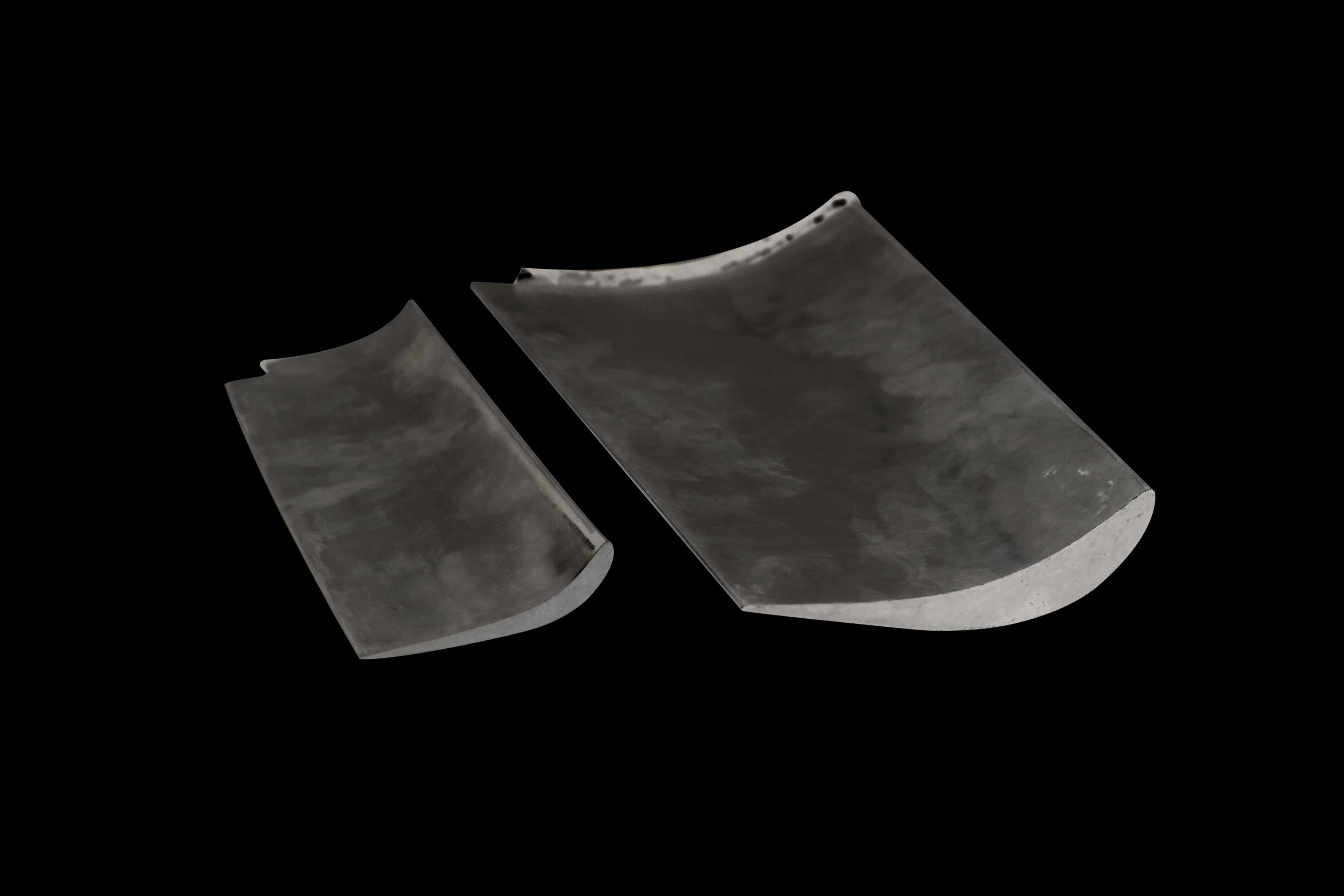CMSX-2 Superalloy CNC Machining Compressor Blades
Introduction
CMSX-2 superalloy CNC machining is a critical post-processing step in the production of advanced compressor blades for high-performance turbine engines. At Neway AeroTech, we specialize in machining single-crystal CMSX-series superalloys with extreme dimensional accuracy (±0.01 mm), smooth aerodynamic surfaces, and excellent fatigue reliability for aerospace propulsion systems and military engines.
CMSX-2, with its high γ′ content and directional mechanical properties, provides excellent creep strength and oxidation resistance up to 1100°C, making it ideal for HPC (high-pressure compressor) and turbine transition blades where thermal stress and mechanical load are intense.
Core Technology of CMSX-2 CNC Machining
Pre-Machining Inspection: Cast blades undergo X-ray inspection and dimensional pre-checks to ensure suitability for CNC processing.
Fixture and Alignment Setup: Custom-designed fixtures and blade orientation systems ensure repeatable and secure clamping without stress distortion.
5-Axis CNC Machining: High-speed machining of airfoil surfaces, platform faces, root forms, and shroud edges to ±0.01 mm tolerance using carbide tools and advanced coolant strategies.
Surface Finish Control: Surface roughness reduced to Ra ≤0.8 µm on flow path areas for improved aerodynamic efficiency and fatigue performance.
Cooling Hole and Slot Machining: Micro EDM and high-precision drilling systems are used to open cooling holes, trailing edge slots, and seal slots on CMSX-2 parts.
Stress Relieving and Cleaning: Low-temperature heat treatment followed by ultrasonic cleaning ensures dimensional stability and readiness for coating.
Final Inspection: Coordinate Measuring Machine (CMM) and surface profilometry validate contour, edge definition, and positional tolerances.
Material Characteristics of CMSX-2 in Machined Blade Form
Property | Value |
|---|---|
Max Operating Temperature | ~1100°C |
Ultimate Tensile Strength | ≥1240 MPa |
Creep Resistance | Excellent at elevated temperature |
Microstructure | Single crystal, <001> oriented |
γ′ Volume Fraction | ~65% |
Machinability | Low (requires carbide or ceramic tooling) |
Surface Finish (Post-CNC) | Ra ≤0.8 µm |
Case Study: CNC Machined CMSX-2 Blades for High-Pressure Compressor Module
Project Background
A military aircraft engine program required precision-machined CMSX-2 compressor blades for the third stage of a high-pressure compressor (HPC) module. The customer specified tight dimensional tolerances (±0.01 mm), high fatigue life, and consistent blade profile for performance matching.
Typical Applications of CMSX-2 CNC Machined Compressor Blades
GE F110 Engine HPC Blades: CMSX-2 blades used in early turbine stages, combining high creep strength and tight profile control.
Eurojet EJ200 Compressor Blades: Machined CMSX-2 airfoils ensure aerodynamic balance and longevity in supersonic fighter platforms.
Industrial Aero-Derivative Compressor Modules: Used in energy sector turbines for gas compression and offshore power turbines requiring single crystal creep strength with tight dimensional control.
Manufacturing Solution
Blade Casting Validation: Each blade is inspected for dimensional consistency and grain orientation using EBSD.
Custom Fixturing: 5-axis workholding fixtures designed to accommodate complex airfoil geometry without distortion.
Precision Machining: All profile sections, root fillets, and seal notches are machined in a single setup to ensure tolerance stack-up control.
Toolpath Optimization: CAM software used to generate cutter paths that minimize tool deflection and heat generation on the superalloy surface.
Cooling Feature Finishing: EDM and high-accuracy gun drilling used to finish film cooling holes and radial cooling slots without microcracking.
Stress Relief and Cleaning: Controlled post-machining heat cycle applied to reduce residual stress and surface tension effects.
Final Metrology: 3D laser scanning and CMM used to verify airfoil contour, platform thickness, and all critical dimensions.
Results and Validation
Dimensional Accuracy: All blade profiles met ±0.01 mm tolerances; bore and platform faces aligned within ±0.005 mm.
Surface Finish Quality: Ra ≤0.8 µm achieved on all leading edges and pressure sides, exceeding aerodynamic performance targets.
Fatigue Life Assurance: Machined blades demonstrated fatigue strength retention over 20,000 high-cycle fatigue cycles at 900°C in simulation.
Cooling Hole Accuracy: Cooling hole positions within ±0.05 mm and diameter within ±0.02 mm; flow area verified through airflow testing.
Defect-Free Machining: Post-machining inspections confirmed no microcracks, burrs, or stress-related warping.
FAQs
Why is CMSX-2 used for compressor blades and not just turbine blades?
What makes CNC machining of CMSX-2 challenging compared to other superalloys?
How does surface finish affect compressor blade aerodynamic performance?
What quality control methods are used to verify machined blade geometry?
Can CMSX-2 blades be repaired or re-machined if damaged during service?

